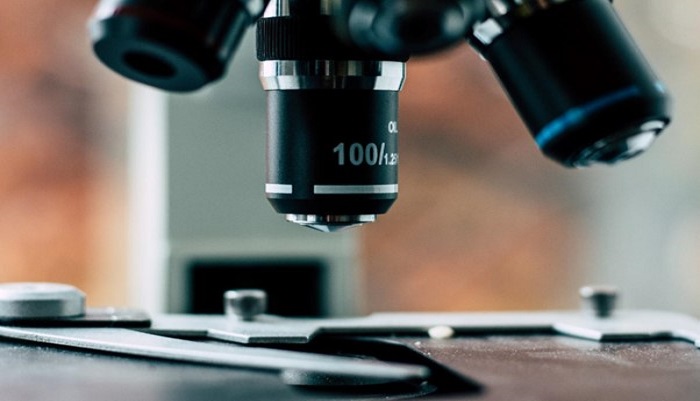
Protein expression systems are frequently linked to how scientists regulate, manufacture, and change proteins in living organisms. When it comes to protein customization research, the phrase can refer to either the research object or the different lab techniques utilized to make and develop proteins. In practice, the recombinant protein expression system is based on cellular machinery.
Choose Custom Protein Synthesis Services
When it comes to proteins, researchers tend to control and synthesize them based on the functional requirements of the cell. Furthermore, the DNA used in the experiment contains the blueprints for proteins, which are then decoded by regulated transcriptional mechanisms to make mRNA or messenger RNA. An mRNA stores a message that is later translated into a specific protein. Transcription refers to the process of transferring DNA to messenger RNA. This results in custom protein synthesis, which results in mRNA sequences.
Introduction
The translation and transcription processes occur concurrently in prokaryotes. However, mRNA translation begins before complete mRNA synthesis. Such activities are spatially separated and occur sequentially in eukaryotes, with transcription occurring in the translation and nucleus and protein synthesis occurring in the cytoplasm.
However, cloning and genetic engineering advancements have made it possible to isolate and express heterologous proteins for research purposes. Furthermore, numerous technological developments have permitted recombinant protein isolation and large-scale expression. However, the proteins required for large-scale applications such as antibody synthesis, enzyme manufacturing, or vaccine production are pretty high. The technique or system by which a protein gets expression should be simple to maintain and culture, create vast amounts of protein and increase.
Furthermore, mammalian proteins are prone to various post-translational modifications. Protein expression services and systems include yeast, insect, bacterium, and mammalian systems that can detect protein expressions.
Some of the following parameters determine the expression system used to manufacture or create recombinant proteins.
- The time taken while expressing the custom protein production
- Form of number of disulfide bonds and post-translational modifications
- Protein amount required
- Handling the expression system
- Protein mass
- The expressed protein destination
What is a Recombinant Protein Expression System
Proteomics research, in general, entails looking into specific properties of proteins such as function, structure, localization, modifications, or protein interactions. Clear researchers typically require specific manufacturing functional proteins to administer how these proteins control biological variables. However, chemical synthesis is not appropriate for such an undertaking due to the complexity and bulk of proteins. Instead, all living cells and cellular components use themselves as factories to develop and build proteins based on their genetic blueprints.
Transfecting cells using DNA vectors containing particular templates is a standard way for recombinant protein expression service. Then, cells are cultured to translate and transcribe the protein synthesis process. These cells are typically lysed to extract expressed proteins for further purification. Researchers use in vivo protein expression fields from both eukaryotic and prokaryotic organisms. Furthermore, the system should be chosen according to the protein type, expected yield, and functional activity requirements. It is critical to understand that each method has advantages and limitations, and selecting the best system for a specific application is critical for successful recombinant protein expression.
Pharmaceutical companies and researchers widely use yeast, Bacterial, Mammalian, and Insect expression systems. However, many individuals have learned to appreciate the benefits and downsides of using any recombinant protein production techniques in recent years.
Furthermore, many recombinant proteins (rec. proteins) are now available commercially. And because many of them, primarily secreted soluble proteins, are biologically active, there should be no need to consider alternatives such as bespoke manufacturing. So, why should you prefer a one-of-a-kind production?
Control your source
Using a service provider lets you see where and by whom your protein is manufactured, and you can also tailor your quality control (QC).
Protein production is carried out so that it must meet your specifications, and you have the assurance that subsequent re-batches will follow the same procedure. The variability between batches is negligible. This ensures consistency in production and, as a result, reproducibility of your outcomes.
Reproducible biological activity
You reduce batch-to-batch variability by dealing with a distinct manufacturing source. There is no chance of supplier changes, which is a risk for OEM items.
You save lengthy, time-consuming, and costly batch validations, which are exacerbated when the batch does not fit, and you must spend time seeking and revalidating new suppliers. If you are not adequately informed, you risk wasting time and money on an r-protein that will never meet your needs.
Save money
Custom production has a significant cost advantage. If your activity requires many levels of proteins, you’ll have to negotiate bulk costs, although a custom batch is usually less expensive after the first manufacture. Furthermore, production often provides volume flexibility to meet increasing demand at a lower price.
Bottomline
Recombinant proteins have numerous uses in biotechnology, research, and medicine. Custom recombinant protein manufacturing is one of the effective strategies utilized in the life sciences sector, which is essential in advanced healthcare. Proteins are altered using specific procedures to produce recombinant proteins; genes then encode these proteins to produce massive amounts of protein, which are then utilized to manufacture therapeutic commercial items. Furthermore, increased government initiatives and investment in life sciences are likely to drive market expansion.

